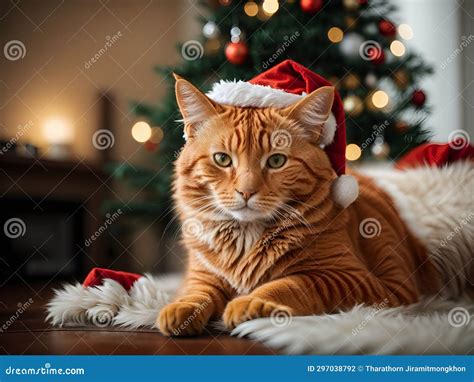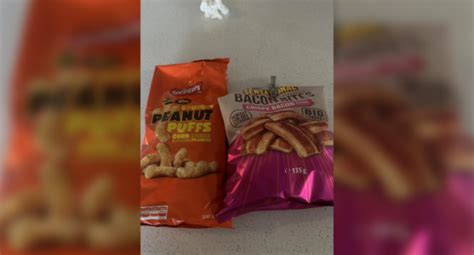
An orange tabby cat named Bob has captivated hearts online for his unusual yet endearing habit of carrying around a toy cat resembling a smaller version of himself, showcasing a heartwarming friendship that has garnered significant attention on social media.
Bob, the ginger feline, has become an internet sensation after his owner, identified as u/OK_Meeting_8373 on Reddit, shared photos and videos of Bob and his miniature plush counterpart. The Reddit user revealed that Bob had adopted the toy, affectionately named Mini Bob, as his constant companion. The posts quickly went viral, attracting thousands of upvotes and comments from users touched by the cat’s unique bond.
According to the owner, the pair is inseparable. “He brings it everywhere,” the Reddit user stated. The images show Bob carrying Mini Bob in his mouth, grooming it, and even sleeping beside it, indicating a deep level of attachment and affection. The orange cat’s dedication to his toy double has sparked a wave of admiration, with many online users expressing their delight and speculating about the reasons behind this heartwarming behavior.
The story underscores the complex social and emotional lives of cats, highlighting their capacity for forming strong attachments and exhibiting nurturing behaviors. Animal behaviorists suggest that Bob’s actions could stem from a variety of factors, including companionship, comfort, or even a sense of responsibility.
The Rise of Bob and Mini Bob
The story of Bob and Mini Bob first emerged on Reddit, where u/OK_Meeting_8373 shared photos and videos of the orange tabby and his toy counterpart. The initial post quickly gained traction, with users praising the adorable sight of Bob carrying his Mini Bob around the house. The owner subsequently provided more details about the cat’s attachment to the toy, fueling the online fascination.
“I found it at a thrift store, and when I brought it home, he immediately claimed it,” the owner explained in one of the Reddit comments. “He’s had it for about a year now, and it’s his favorite thing.” The posts document various scenes of Bob and Mini Bob together, from Bob gently carrying the toy in his mouth to cuddling with it during naps. The consistent display of affection captured in these images has solidified the pair’s status as internet darlings.
The owner’s posts not only showcased the cat’s behavior but also invited speculation and interpretation from other Reddit users. Many offered theories about why Bob might be so attached to the toy, ranging from the comforting texture of the plush to the visual similarity between Bob and Mini Bob. Some users humorously suggested that Bob sees Mini Bob as his own kitten, while others proposed that the toy serves as a surrogate companion.
Interpreting Bob’s Behavior
Animal behaviorists offer several possible explanations for Bob’s attachment to Mini Bob. Dr. Sarah Ellis, a feline behavior specialist, suggests that the behavior may be rooted in the cat’s natural instincts. “Cats are social creatures, and they often form strong bonds with other animals and even inanimate objects,” Dr. Ellis explained. “In Bob’s case, the toy might provide a sense of comfort and security.”
Another theory posits that Bob’s actions are related to his early experiences as a kitten. Cats that are separated from their mothers prematurely may develop a stronger attachment to surrogate objects, such as blankets or toys. These objects can provide a sense of familiarity and reassurance, helping the cat cope with feelings of anxiety or insecurity.
“It’s also possible that Bob simply enjoys the texture and feel of the toy,” added Dr. Emily Weiss, another animal behaviorist. “Cats often have preferences for certain materials, and the plush texture of Mini Bob might be particularly appealing to him.” The act of carrying the toy around could also be a form of play, allowing Bob to engage in his natural hunting instincts in a safe and controlled manner.
Regardless of the underlying reasons, it is clear that Bob’s attachment to Mini Bob is a significant aspect of his life. The bond between the two underscores the complex emotional lives of cats and highlights their capacity for forming deep and meaningful relationships.
The Significance of Feline Companionship
The story of Bob and Mini Bob also sheds light on the broader topic of feline companionship. Cats are often perceived as independent and aloof, but they are capable of forming strong bonds with their owners and other animals. These relationships can provide significant emotional and social benefits, enriching the lives of both cats and their human companions.
Studies have shown that owning a cat can reduce stress, lower blood pressure, and even decrease the risk of heart disease. Cats provide companionship and affection, helping to alleviate feelings of loneliness and isolation. They also offer a sense of purpose and responsibility, encouraging owners to be more active and engaged in their daily lives.
In addition to their direct benefits, cats can also serve as social catalysts, facilitating interactions between people and fostering a sense of community. Online forums and social media groups dedicated to cats provide a space for owners to share their experiences, exchange advice, and connect with others who share their passion for felines.
The story of Bob and Mini Bob is a testament to the power of companionship and the unique bonds that can form between animals and their human companions. It serves as a reminder that cats are not simply pets but cherished members of the family, capable of providing love, comfort, and endless entertainment.
Public Reaction and Social Media Impact
The viral spread of Bob and Mini Bob’s story underscores the power of social media in sharing heartwarming animal stories. Platforms like Reddit, Twitter, and Instagram have become hubs for users to share and celebrate unique animal behaviors and relationships, creating a sense of community and collective joy.
The reaction to Bob and Mini Bob has been overwhelmingly positive, with users expressing their delight and admiration for the pair. Many have shared their own stories of cats forming attachments to toys or other objects, creating a sense of shared experience and camaraderie. The story has also inspired artists and creators to produce fan art and memes, further amplifying its reach and impact.
The widespread attention garnered by Bob and Mini Bob highlights the emotional connection that people have with animals. In a world often characterized by stress and uncertainty, stories of animal companionship offer a source of comfort and hope. They remind us of the simple joys in life and the power of love and connection, regardless of species.
The viral success of Bob and Mini Bob also demonstrates the potential of social media to promote positive messages and raise awareness about animal welfare. By sharing heartwarming stories and images, users can help to foster a greater appreciation for animals and encourage responsible pet ownership.
Expert Opinions on Feline Behavior
To delve deeper into the fascinating behavior of Bob and his attachment to Mini Bob, insights from animal behavior experts offer valuable perspectives. Dr. Alice Moon-Fanelli, a certified animal behaviorist, emphasizes the importance of understanding individual cat personalities. “Each cat is unique, and their behaviors are influenced by a combination of genetics, early experiences, and environmental factors,” she explains.
Dr. Moon-Fanelli notes that Bob’s behavior could be a manifestation of neoteny, the retention of juvenile traits in adulthood. “Some cats retain kitten-like behaviors throughout their lives, such as kneading, suckling, or carrying objects,” she says. “These behaviors are often associated with comfort and security.”
Dr. Nicholas Dodman, a veterinary behaviorist, adds that the similarity between Bob and Mini Bob could be a significant factor. “Cats have excellent visual recognition skills, and Bob may recognize the toy as a representation of himself,” he explains. “This could trigger a sense of self-recognition and attachment.”
Dr. Dodman also suggests that the act of carrying the toy could be a form of displacement behavior, a way for Bob to cope with stress or anxiety. “When cats are feeling uncertain or threatened, they may engage in behaviors that seem unrelated to the situation, such as grooming or playing,” he says. “Carrying the toy could be a way for Bob to redirect his energy and reduce his stress levels.”
The experts agree that Bob’s behavior is not necessarily indicative of any underlying problem. In most cases, cats that form attachments to toys or other objects are simply expressing their natural instincts and preferences. As long as the behavior does not cause any harm or distress, it should be accepted and even celebrated.
Comparative Animal Behavior
The phenomenon of animal attachments to inanimate objects is not unique to cats. Many species of animals, including dogs, birds, and even primates, have been observed forming strong bonds with toys, blankets, or other objects. These attachments often serve similar functions as they do in cats, providing comfort, security, and a sense of companionship.
In dogs, for example, it is common for puppies to become attached to a particular toy or blanket, which they carry around with them and sleep with. This behavior is often seen as a sign of security and comfort, similar to a child’s attachment to a favorite teddy bear. Some adult dogs also retain this behavior, continuing to seek comfort from their favorite objects throughout their lives.
Birds, too, can form attachments to objects, particularly those that resemble their natural environment. For example, parrots have been known to become attached to mirrors or other reflective surfaces, mistaking their own reflection for another bird. This can lead to complex social interactions, as the bird attempts to communicate and bond with its reflection.
Even primates, who are known for their complex social behaviors, can form attachments to inanimate objects. In some cases, primates have been observed carrying around dolls or stuffed animals, treating them as surrogate infants. This behavior is particularly common in primates that have been separated from their mothers at a young age.
The prevalence of these attachments across different species suggests that they serve a fundamental psychological need. Whether it is providing comfort, security, or a sense of companionship, these objects can play an important role in the emotional lives of animals.
Responsible Pet Ownership and Animal Welfare
The story of Bob and Mini Bob also provides an opportunity to reflect on the importance of responsible pet ownership and animal welfare. Providing cats with a stimulating and enriching environment is essential for their physical and mental well-being. This includes offering them plenty of opportunities for play, exploration, and social interaction.
Cats need access to toys, scratching posts, and other enrichment items that allow them to express their natural behaviors. They also benefit from having a safe and comfortable space to retreat to when they are feeling overwhelmed or stressed. Regular veterinary care is also essential for maintaining a cat’s health and preventing potential problems.
Responsible pet owners should also be aware of the potential risks associated with certain toys and objects. Small toys or objects that can be easily swallowed should be avoided, as they can pose a choking hazard. Similarly, toys made from toxic materials should be avoided, as they can be harmful if ingested.
By providing cats with a safe, stimulating, and loving environment, owners can help to ensure that their feline companions live happy and fulfilling lives. The story of Bob and Mini Bob serves as a reminder of the unique bond that can form between animals and their human companions, and the importance of treating these relationships with respect and care.
Long-Term Implications of Attachment
While Bob’s attachment to Mini Bob is currently perceived as a positive and heartwarming aspect of his life, it is important to consider the potential long-term implications of such a strong attachment. While generally harmless, an over-reliance on a single object could, in some cases, indicate underlying anxiety or stress.
If Bob were to lose Mini Bob, it could potentially trigger a significant emotional response. Cats, like humans, can experience grief and loss, and the absence of a beloved companion object could lead to behavioral changes, such as decreased appetite, increased vocalization, or withdrawal. Therefore, it might be prudent for the owner to consider having a backup Mini Bob, if possible, to mitigate potential distress.
Furthermore, as Bob ages, his physical abilities may decline, making it more difficult for him to carry Mini Bob around. This could also lead to frustration or sadness. The owner should be mindful of these potential challenges and provide Bob with alternative sources of comfort and stimulation as he grows older.
However, it is also important to avoid over-pathologizing Bob’s behavior. In most cases, a strong attachment to a toy is simply a harmless quirk that adds to a cat’s unique personality. As long as Bob is otherwise healthy and well-adjusted, there is no reason to be overly concerned about his affection for Mini Bob.
The key is to provide Bob with a supportive and enriching environment that allows him to express his natural behaviors and cope with any potential challenges that may arise. This includes providing him with plenty of love, attention, and opportunities for play, as well as ensuring that he has access to high-quality food, fresh water, and regular veterinary care.
The Future of Bob and Mini Bob
As Bob and Mini Bob continue to capture the hearts of internet users, their story is likely to evolve and unfold in unexpected ways. The owner may continue to share updates and photos of the pair, allowing followers to witness their bond and celebrate their unique relationship.
It is also possible that Bob and Mini Bob could become involved in animal welfare initiatives or other charitable causes. Their story could be used to raise awareness about the importance of animal companionship and responsible pet ownership. They could also inspire others to adopt rescue animals or provide support to animal shelters and rescue organizations.
Regardless of what the future holds, the story of Bob and Mini Bob serves as a reminder of the power of love, connection, and the simple joys that can be found in the animal kingdom. Their heartwarming tale has resonated with people around the world, offering a welcome dose of positivity and reminding us of the importance of cherishing the bonds that we share with our animal companions.
The continuing saga of Bob and Mini Bob offers a glimpse into the complex emotional lives of animals, reinforcing the idea that they are not merely pets but sentient beings capable of experiencing a wide range of emotions. It calls for greater empathy and understanding towards animals and highlights the responsibility that humans have to ensure their well-being and happiness.
FAQ Section
1. Why is Bob so attached to his toy cat, Mini Bob?
Animal behaviorists suggest several reasons for Bob’s attachment. It could be due to the toy providing comfort and security, reminiscent of kittenhood experiences, or simply because Bob enjoys the texture and feel of the plush toy. The visual similarity between Bob and Mini Bob might also contribute to a sense of recognition and attachment. Dr. Sarah Ellis explains, “Cats are social creatures, and they often form strong bonds with other animals and even inanimate objects. In Bob’s case, the toy might provide a sense of comfort and security.”
2. Is it normal for cats to form strong attachments to toys?
Yes, it is quite common for cats to form strong attachments to toys or other objects. This behavior is often seen as a sign of security and comfort, similar to a child’s attachment to a favorite toy. “Some cats retain kitten-like behaviors throughout their lives, such as kneading, suckling, or carrying objects,” says Dr. Alice Moon-Fanelli. “These behaviors are often associated with comfort and security.” As long as the behavior does not cause any harm or distress, it is generally considered normal and harmless.
3. What would happen if Bob lost Mini Bob?
Losing Mini Bob could potentially trigger an emotional response in Bob. Cats can experience grief and loss, and the absence of a beloved object could lead to behavioral changes, such as decreased appetite, increased vocalization, or withdrawal. It is advisable for the owner to consider having a backup Mini Bob to mitigate potential distress.
4. Does Bob’s behavior indicate any underlying problems?
In most cases, a strong attachment to a toy is simply a harmless quirk that adds to a cat’s unique personality. As long as Bob is otherwise healthy and well-adjusted, there is no reason to be overly concerned about his affection for Mini Bob. Experts emphasize the importance of providing a supportive and enriching environment to help cats express their natural behaviors.
5. How can I encourage a healthy attachment in my cat?
Provide your cat with a variety of toys, scratching posts, and other enrichment items to allow them to express their natural behaviors. Offer a safe and comfortable space for them to retreat to when they are feeling overwhelmed. Engage in regular play sessions to stimulate their minds and bodies. By providing a stimulating and loving environment, you can help your cat develop healthy attachments and live a happy and fulfilling life.









